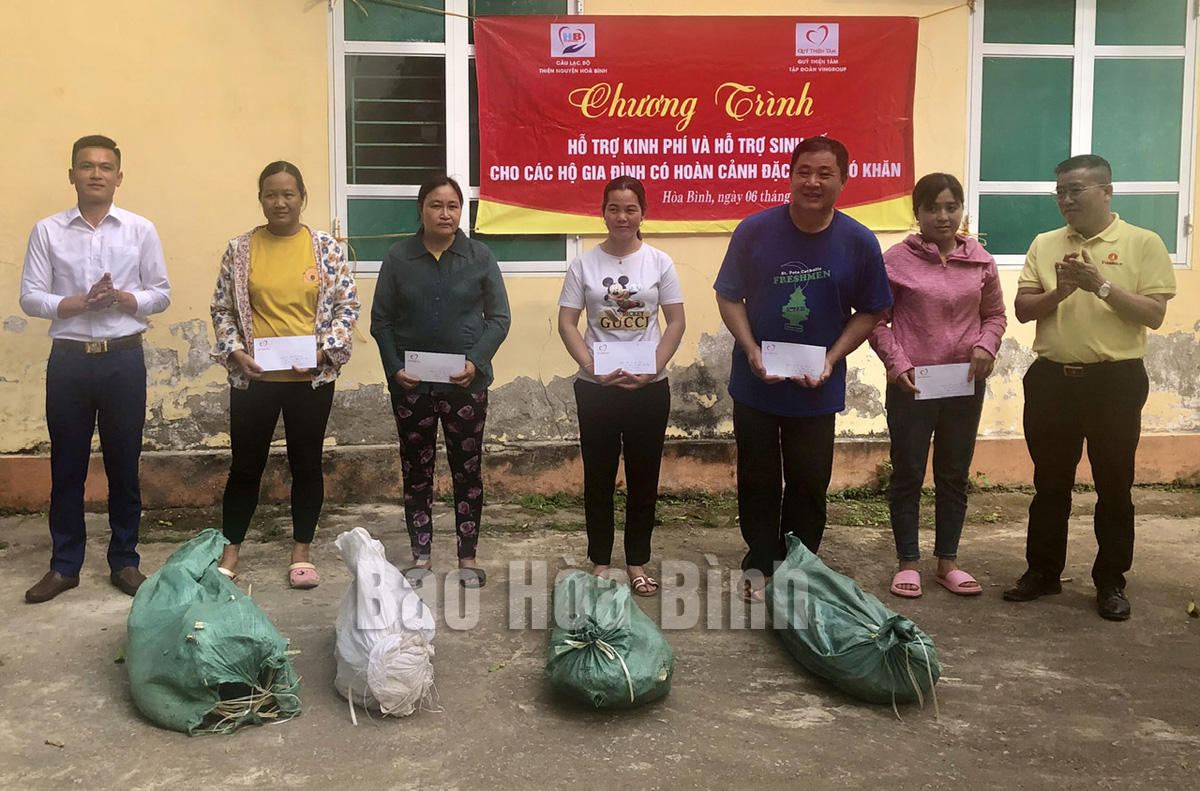
(HBO) – Ethnic households in Mai Chau district have had better livelihoods and incomes thanks to support from local authorities and organisations. In Tong Dau commune, people were given a high-quality rice variety to grow in a pilot area of 4 ha. Seeing positive results of the pilot programme, last year, local farmers expanded the cultivation area using this rice variety.

Meanwhile,
in Cun Pheo commune, the district’s Red Cross Association and other organisation
gave people young animals for raising.
People
in other communes of Mai Ha, Son Thuy, Bao La, and Xam Xoe were also provided
with seeds, young animals, and medicinal plants.
With
funding from the National Target Programme for Socio-economic Development in
Ethnic Minority and Mountainous Areas, Mai Chau district People's Committee
supported each household in Bao hamlet 3 million VND to buy seeds. The
committee coordinated with the GNI organisation to open training courses on
livestock raising techniques, and assisted local residents in the establishment
and operation of the Muong Pa cooperative that specialises in raising and
supplying indigenous pork.
From
17 members, the cooperative now has nearly 50 members. The cooperative’s pork
is sold in Hanoi and neighbouring provinces, bringing stable income to the
cooperative’s members.
According to Ngan Van Toan, deputy head of the district's Department of
Agriculture and Rural Development, programmes and policies to support ethnic
minorities and ethnic minorities have been effectively implemented.
Initial results show that the support helped to increase production value,
income and improve people's living standards.
Ha Van Hai, head of the district's Ethnic Group Affairs Section said that the
district is home to many ethnic groups with the Thai people accounting for
nearly 60% of the district’s population and the Muong 16.6%.
Over
the past time, the district has focused on implementing Resolution No. 03-NQ/TU
of the provincial Party Committee on socio-economic development in ethnic
groups and mountainous areas from 2021 to 2030.
One of
its key tasks is to develop ethnic groups and mountainous areas in association
with economic restructuring, contributing to stabilizing and improving the
people's living standards.
The
Mai Chau district Party Committee has directed agencies, departments, sectors,
and mass organisations to strengthen coordination, and effectively combine
poverty reduction efforts with the implementation of the two national target
programmes on sustainable poverty reduction and new-style rural area
construction.
The
district also supports ethnic group people with social security policies and
vocational training programmes for rural workers.
Such
support not only contributes to improving the lives of ethnic people but also
helps the district to meet the criteria of new-style rural area construction
and step up sustainable poverty reduction in ethnic minority areas.
The
district strives to reduce the poverty rate in ethnic group areas by 3-4% yearly
until 2030./.
Living green is a healthy, positive, and sustainable lifestyle that not only helps protect
the environment and quality of life but also conserves natural resources and ecosystems.
Among the many ways to embrace this lifestyle, reducing plastic consumption is one of the most impactful.
The women's unions at all levels in Kim Boi district have been making significant contributions to the movement of building cultural life in the local community.
The movement helps improve rural look and the spiritual and material lives of local residents.
The Hoa Binh provincial People’s Committee has issued an action plan to ensure food safety, promote processing, and develop the market for agricultural, forestry, and fishery products in 2025.
In recent years, the development of rural handicrafts has not only helped preserve and promote the traditional values but it has also created jobs and improved incomes for the local residents.
By harmoniously combining traditional medicine with modern medical practices, the Hoa Binh Traditional Medicine Hospital is strengthening its role in the province’s healthcare system.



